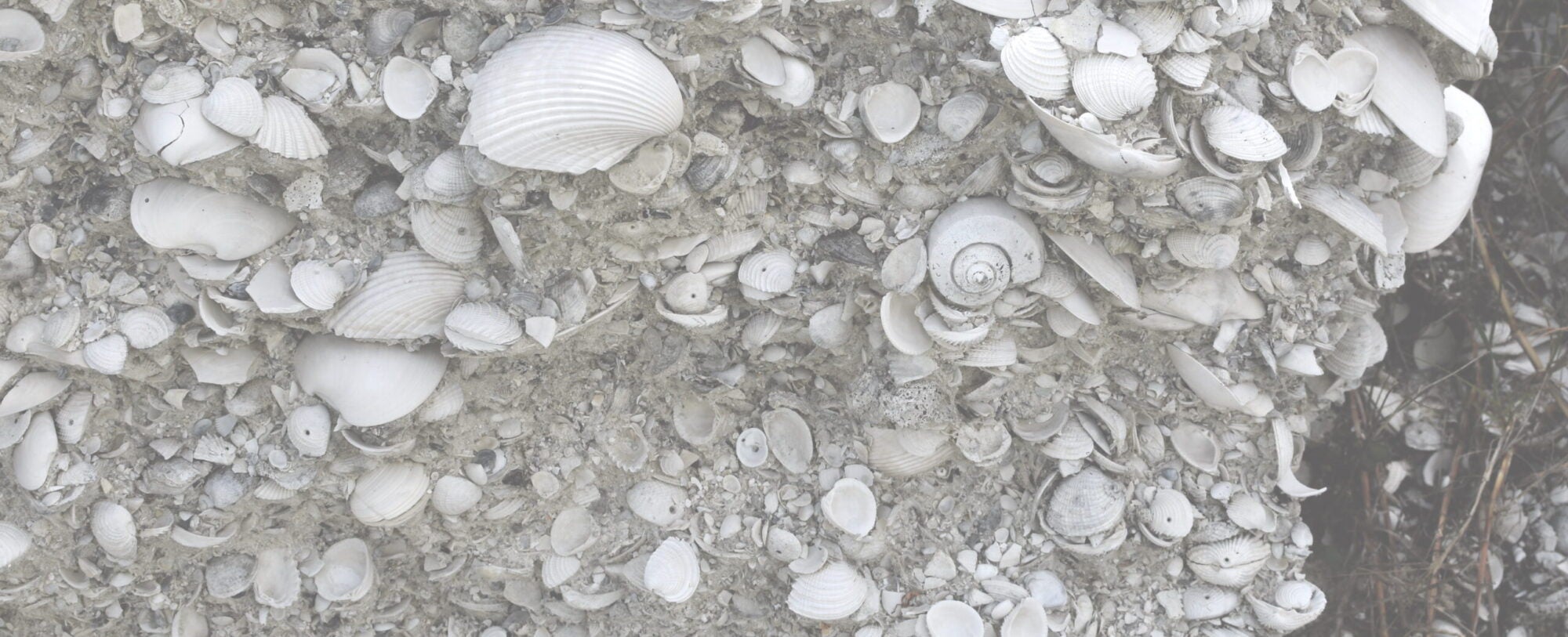Research in the Petersen Group (SCIPP Lab) focuses on reconstructing past climate using geochemical tools, in particular, oxygen, carbon, and clumped isotopes of carbonate fossils. We have ongoing projects focusing on reconstructing climate in the Cretaceous, Pliocene, Pleistocene and other time periods, looking at how climate has changed on million-year down to sub-annual timescales.
Here are some ongoing topics of focus:
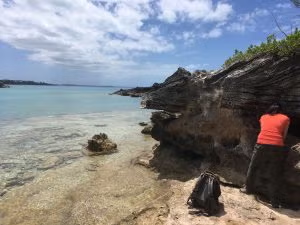 Interglacial Climate in the Atlantic and Caribbean
Interglacial Climate in the Atlantic and Caribbean
The Last Interglacial (LIG) interval (~125,000 years ago) is the most recent time that global climate was warmer than today. Understanding how much warmer it was, and the spatial pattern of that warming, is relevant for our future under anthropogenic global warming. In particular, how much warmer was it in the western Atlantic, along the U.S. East Coast, and in the Caribbean? Warmer waters in these areas drive increased hurricane strength in the area, with great consequence for these densely populated areas where storms may make landfall.
Our group has a funded NSF grant to answer this question by studying the geochemistry of fossil shells from Bermuda and multiple sites in the Carribbean and along the U.S. East Coast. This project is in collaboration with Dr. Kacey Lohmann (UMich) and Dr. Ian Winkelstern (GVSU).
[For prospective students: this project involves field work to exciting (tropical!) locations, followed by lab work to analyze fossils and water samples we’ve collected.]
Related papers:
 Cretaceous-Paleogene Mass Extinction
Cretaceous-Paleogene Mass Extinction
Roughly 250 kyr before the end of the Cretaceous, the Deccan Traps in India began erupting an enormous amount of lava and spewing CO2 and other volatiles into the atmosphere and warming the planet. This large, but slow-developing environmental change was punctuated by the Chicxulub meteorite impact, which dealt a devastating blow to life on earth. In total, the end-Cretaceous mass extinction wiped out ~75% of species. Debate continues about the relative contribution of the Deccan Traps vs. the Chicxulub meteorite to the overall extinction.
In the Petersen group, we are working on tracking climate change leading up to the Cretaceous-Paleogene boundary, especially warming resulting from Deccan Traps CO2, looking at sites both near and far from the Large Igneous Province. We have an NSF funded project in collaboration with a group of paleontologists to reconstruct ocean conditions in the Gulf Coastal Plain region across this boundary in support of ecological niche modeling studies. We also continue to study other new sites globally.
[For prospective students: this project involves field work in the Gulf Coast region, as well as lots of lab work to analyze fossils we and our collaborators have collected in the field, or gathered from museum collections.]
Related papers:
- [Petersen et al., 2016, Nature Communications]
- [Meyer et al., 2018, Cretaceous Research]
- [Meyer et al., 2019, Nature Communications]
- [O’Hora et al., 2022, Climate of the Past]
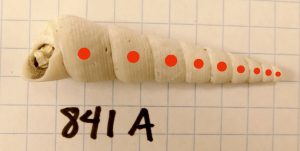 Making Estimates of Paleo-Seasonality Better with D47
Making Estimates of Paleo-Seasonality Better with D47
Political and societal discussions of modern climate change focus primarily on how global mean annual temperatures are increasing from year to year. However, for most organisms, the day-to-day and season-to-season experience, not the long-term average climate state, determines their survival or extinction, their success or failure. Relatively few paleoclimate archives have temporal resolution sufficient to identify seasonal-scale temperature changes or the longevity to preserve this information from ancient greenhouse climate intervals.
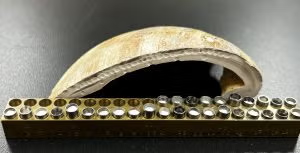 Mollusk shells represent a unique archive that is both capable of seasonal resolution and is preserved into the deep past. Mollusks precipitate their calcium carbonate shells in annual, monthly, and even daily growth increments, and their skeletons can survive over 100s of millions of years, given the right conditions. We use sclerochronology (sub-annual isotopic sampling of mollusk shells) to reconstruct past seasonal variations in temperature and δ18Oseawater. We have ongoing projects calibrating this approach using modern bivalves and gastropods, as well as paleoclimate applications using fossil shells from multiple time periods.
Mollusk shells represent a unique archive that is both capable of seasonal resolution and is preserved into the deep past. Mollusks precipitate their calcium carbonate shells in annual, monthly, and even daily growth increments, and their skeletons can survive over 100s of millions of years, given the right conditions. We use sclerochronology (sub-annual isotopic sampling of mollusk shells) to reconstruct past seasonal variations in temperature and δ18Oseawater. We have ongoing projects calibrating this approach using modern bivalves and gastropods, as well as paleoclimate applications using fossil shells from multiple time periods.
Traditionally, sclerochronology studies have used the δ18O paleothermometer under the assumption that d18Oseawater is constant throughout the year and well-constrained in the studied paleoenvironment. Both these assumptions increase uncertainty in reconstructed temperatures. Recent advancements in clumped isotope paleothermometry mean we can now apply this method at subannual scales to reconstruct absolute temperatures, directly calculate δ18Oseawater values, and assess assumptions of little-to-no variability in δ18Oseawater through time. This new type of data requires new data processing methods as well. We are working to figure out the correct way to sample mollusk shells to get the best estimate of paleoseasonality, balancing analytical considerations (sample size, sampling resolution, instrument precision, analysis time) and biological constraints (growth stoppages, overall shell size). We are beginning by calibrating these methods in multiple modern species of bivalves and marine gastropods, while simultaneously applying them to the fossil record. Lots of ongoing work in this area!
[For prospective students: We are pioneering new methods to reveal subannual climate that can be applied to any time period, and many fossil mollusk taxa. New directions galore!]Related papers:
Biologically-derived isotopic fractionations (BioDIF’s)
Biogenic carbonates (corals, bivalves, gastropods, cephalopods, foraminifera) have long been known to display “vital effects” or offsets in their isotopic composition from expected values given known environmental conditions. These “vital effects” are usually avoided for paleoclimate studies, and this term serves as a grab bag for all sorts of isotopic weirdness. With the development of clumped isotope paleothermometry, we can look one step deeper into these BioDIF’s to determine whether precipitation of the shell occurred in isotopic and chemical equilibrium, and whether the fluid from which the organism precipitated its skeleton (usually an internal fluid of some kind) differed in composition from surrounding seawater (δ18Oseawater).
We have ongoing projects seeking out BioDIFs in a wide range of bivalve and gastropod species and assessing the underlying shell precipitation mechanisms. Observed BioDIFs are linked to species’ position on the evolutionary tree to answer questions about evolution on grand scales.
[For prospective students: This project mixes paleontology, cutting edge geochemistry, and biology of modern organisms. Lots of open questions to study through this new lens.]Related papers:
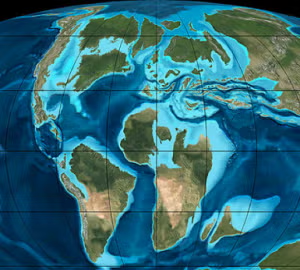 Cretaceous Hothouse Climates
Cretaceous Hothouse Climates
Global temperatures during the Cretaceous period (66-144 Ma) were 6-14°C warmer than today [Barron, 1983] and atmospheric CO2 levels were 400-1500 ppm [Hong and Lee, 2012]. Therefore, this period can act as a climate analog for temperatures and CO2 levels we are expected to reach in the coming 1-2 centuries. The presence of crocodiles and palm trees in Canada [Manchester et al., 2010] and forests on the Antarctic Peninsula [Francis & Poole, 2002] suggest the poles were much warmer than today, but data is murkier when it comes to tropical and mid-latitude warming. Climate reconstructions disagree on the magnitude and spatial pattern of the warming [Hay, 2008 and references therein]. Was the equator-to-pole temperature gradient similar to today? Flatter? Was it warmer everywhere? Or warmer at the poles but similar to modern in the tropics? During periods of peak warmth, how hot was hot?
We are applying the clumped isotope paleothermometer to revisit the question of equator-to-pole temperature gradient in the Cretaceous period and constrain peak ocean temperature experienced on Earth.
Related papers:
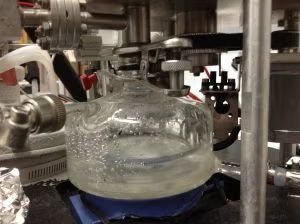 Technical Advancements in Clumped Isotope Paleothermometry: Paired D47/D48
Technical Advancements in Clumped Isotope Paleothermometry: Paired D47/D48
We are constantly trying to improve the clumped isotope measurement and data processing techniques we use. This includes things like developing methods to reduce the sample size requirements for a single measurement or documenting isotopic fractionations induced by having a Porapak trap that is too cold. We led an 11-lab compilation and reprocessing of published clumped isotope calibration data using updated isotopic parameters (R18_VSMOW, R17_VSMOW, R13_VPDB, and lambda). This effort spawned the ‘ClumpDB’, a permanent data archive for clumped isotope data, for which we developed a universal template. This will hopefully facilitate future clumped isotope data compilation studies.
The newest “cutting edge” in clumped isotope paleothermometry is measuring D48, or doubly subsitituted CO2 with two oxygen 18s (18O-12C-18O) instead of one 13C and one 18O (18O-13C-16O). Mass-48 CO2 is even more rare than mass-47 CO2 making it an analytically even harder measurement, but one that is well worth the effort. Since both D47 and D48 are solely temperature dependent, there is a predicted pair of values for each temperature that can plot an “equilibrium line”. If measured D47 and D48 pairs deviate from this line, it indicates that carbonate precipitation occurred out of equilibrium. Different types of carbonate materials (corals vs. speleothems) deviate from this line in different directions, indicating different disequilibrium mechanisms.
We are looking at D47/D48 in all types of marine mollusks to test for mechanisms of shell precipitation (see above) and are exploring new applications for this measurement, such as testing stressed vs. unstressed corals.
Related papers:

